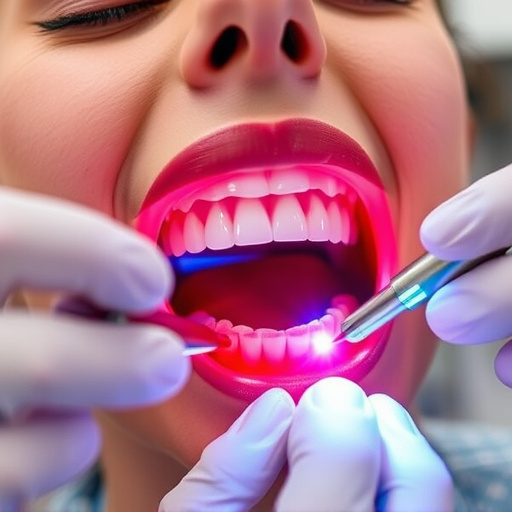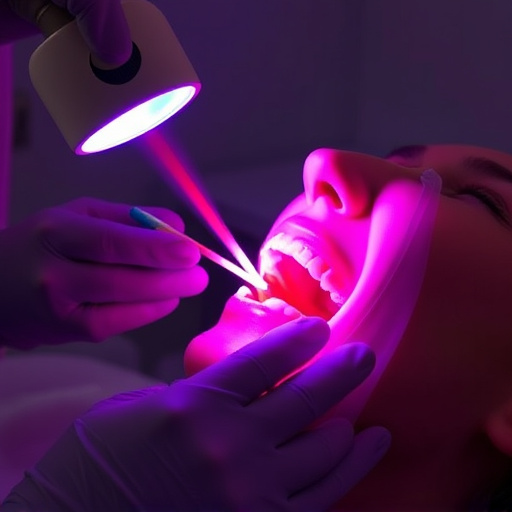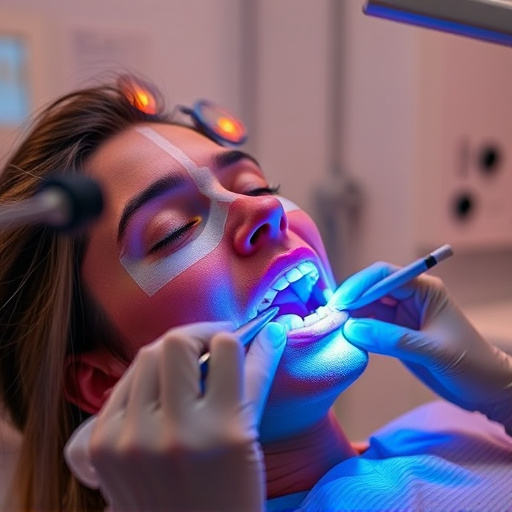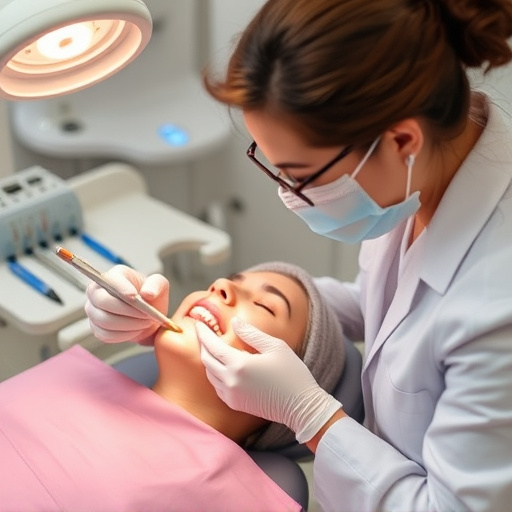Nitrous oxide sedation, or laughing gas, safely and effectively manages dental anxiety, offering a game-changing solution for phobic or sensitive patients. Administered through a mask, it induces relaxation and euphoria during procedures like teeth cleaning or aligner placements. While mild side effects like dizziness are common, rare severe reactions may occur. Dentists must conduct thorough patient assessments, obtain informed consent, and follow structured protocols for safe administration in controlled environments, adhering to evidence-based guidelines.
“Experience calm and comfort during medical procedures with the power of nitrous oxide sedation. This gentle, safe method offers a unique way to manage anxiety and pain. Our article explores the fundamentals of nitrous oxide sedation, its advantages for patients, and the essential practices ensuring a smooth, risk-mitigated experience.
Delve into the benefits, from reducing fear to providing a painless procedure, and discover how healthcare professionals can deliver effective, controlled doses. By understanding nitrous oxide sedation, patients can make informed choices, knowing their well-being is prioritized.”
- Understanding Nitrous Oxide Sedation: The Basics
- Benefits and Risks of Using Nitrous Oxide for Sedation
- Best Practices for Safe and Effective Administration
Understanding Nitrous Oxide Sedation: The Basics

Nitrous oxide sedation, also known as laughing gas, is a safe and effective method used to manage anxiety during dental procedures. This form of sedation involves inhaling a mixture of nitrous oxide and oxygen through a mask, allowing patients to feel relaxed and calm. The basic principle behind its effectiveness lies in altering sensory perception and triggering a state of euphoria, making the experience more comfortable for those who experience dental phobia or anxiety.
It is commonly used in various dental settings, including cosmetic dentistry and general practices. Patients with conditions like tooth sensitivity, severe anxiety, or complex treatments often benefit from nitrous oxide sedation as it enables them to remain still and relaxed during procedures such as teeth cleaning or clear aligner placements. This simple yet powerful technique has proven to be a game-changer for many individuals who previously avoided dental care due to fear or discomfort.
Benefits and Risks of Using Nitrous Oxide for Sedation

Nitrous oxide sedation offers a unique advantage as a mild sedative agent for patients facing dental procedures. Its primary benefits include reduced anxiety and pain perception during treatments, making it particularly useful for those who experience dental phobias or are sensitive to traditional local anesthetics. The gas is easily administered through a mask, allowing patients to remain calm and relaxed while still being able to respond to the dentist’s instructions.
However, like any sedation method, nitrous oxide has its risks. Potential drawbacks include dizziness, nausea, and a temporary alteration in sensory perception after the treatment. While rare, some individuals may experience more severe reactions or have underlying conditions that contraindicate its use. Therefore, it’s crucial for dentists to conduct thorough patient assessments and ensure informed consent before employing nitrous oxide sedation, especially when considering procedures like dental bonding or emergency dental care, or planning for long-term solutions such as dental implants.
Best Practices for Safe and Effective Administration

The safe and effective administration of nitrous oxide sedation requires a meticulous approach to ensure patient comfort and optimal outcomes. Best practices commence with careful patient selection, taking into account their medical history, any co-morbidities, and their tolerance for sedatives. Trained dental professionals should administer nitrous oxide in a controlled environment, such as a dental office equipped with monitoring devices. This includes continuous observation of vital signs and the level of sedation to prevent adverse reactions.
Before initiating sedation, patients should be educated on the process, potential side effects, and the importance of following instructions for breathing during and after treatment. Dental bonding or routine oral exams may become more manageable under nitrous oxide sedation, but these procedures should still be conducted with appropriate measures to maintain patient safety. General dentistry professionals must stay updated on evidence-based guidelines for nitrous oxide administration to guarantee a safe and effective experience for every patient.
Nitrous oxide sedation offers a safe and effective way to manage anxiety during medical procedures, with numerous benefits including rapid onset, mild side effects, and easy reversal. However, it’s crucial to follow best practices for administration, such as proper training, controlled dosing, and continuous monitoring, to mitigate potential risks like respiratory depression or dizziness. By adhering to these guidelines, healthcare providers can ensure positive patient experiences, enhancing the overall safety and effectiveness of nitrous oxide sedation.














